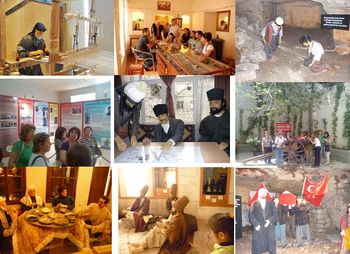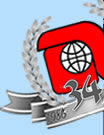 Gaziantep is a metropolitan city with its economy, tourism and city planning structure. It is the largest city in the Southeast and the sixth largest city in Turkey. The average green belt per person in Gaziantep is 12 m2 while it is 9 m2 in Europe, and the rate of literacy is 96%. Gaziantep covers 1% of Turkey with its acreage of 6216 m2, and its altitude is 850 meters.
Gaziantep is a metropolitan city with its economy, tourism and city planning structure. It is the largest city in the Southeast and the sixth largest city in Turkey. The average green belt per person in Gaziantep is 12 m2 while it is 9 m2 in Europe, and the rate of literacy is 96%. Gaziantep covers 1% of Turkey with its acreage of 6216 m2, and its altitude is 850 meters.
Gaziantep embodies the biggest, the prettiest, the most precious, and the oldest:
- It is the oldest living settlement on Earth (Ancient Dülük Settlement; 600.000 years old)
- It has the oldest sculpture workshop (Yesemek Sculpture Workshop from Late Hittite Period; 4000 years old)
- It is the furthest eastern border of Eastern Roman Empire (Zeugma – Nizip)
- It has the most beautiful mosaics in the world (Zeugma Mosaics)
Gaziantep has a jolly nature. No other community in the world has such tradition of food when compared to Gaziantep: in the first morning of Ramadan Holiday, whether he now dwells in Ağrı or New York, a person from Gaziantep cooks and eats his “yuvarlama”. The bridal shower of the region is embroidered with wordplays and folkdances, making the shower one of the most important means of entertainment. Families from Gaziantep work really hard six days a week, and make the most of their hard work on the seventh day, with their picnics. The picnics are very well known for kebabs and traditional meatballs, bringing the loved ones together. Food is a must in the region. People live to eat good food in Gaziantep. Eating is not survival but it is a means of delight in Gaziantep.
With its international airport and the location where the Southeast is linked to the Mediterranean and Middle East, Gaziantep hosts many visitors and it is one of the most important spots of trade.
¼ of the soil in Gaziantep is fertile and arable, and irrigated by Euphrates. Gaziantep has many industrial crops as pistachios, olives, cotton, grapes, red pepper and linen along with grains as lentil, wheat and barley.
With its geographical location, Gaziantep is the first city in the Southeastern Anatolian Project (SAP), and forms the basis of SAP with its industry and volume of trade. Gaziantep has a major economic register over its surrounding 18 cities.
Gaziantep is the oldest living settlement on Earth and has a history of 600.000 years. The old settlement is known as Ayıntap and is located 12 km northwest, between Dülük and Karahöyük villages. In archeological researches, there have been flint stones along with findings from Chalcolithic Era and Copper Age, making the area the oldest living settlement on Earth.
The historical timeline of Gaziantep could be summarized as Chalcolithic, Paleolithic, Neolithic Eras, Bronze Age, Hittites, Met, Assyrian, Persian, Alexanderian, Selefkoses, Roman, Byzantinian, Arabic-Islamic and Turkish-Islamic Periods.
Gaziantep owes its historical heritage to its geographical location. It is between Mesopotamia and the Mediterranean region, and in the junction of the trade route; thus, has been the host for many civilizations since prehistoric times. Gaziantep is also located on the Silk Road, which maintained the importance of the city.
Gaziantep had been a part of Babylonia and was a city in the Hittites 1700 B.C. “Dülük” was a religious center of the Hittites and therefore is historically of utmost importance.
Gaziantep and its surrounding were under the reign of Assyrian, Med and Persian Empires during 700-546 B.C. and were taken over by the Romans after Alexander the Great. The city was then a part of the Byzantine Empire until 636 A.D.
Gaziantep preserved its importance in trade throughout the years because of its location, and with its presence on the trade routes from Kahramanmaraş and Aleppo, and from Birecik to Mediterranean region, Gaziantep has been the trade and culture center of every era.
We can still see the traces of our heritage and are aware of our history. Gaziantep is a perfect host with its Four Aces of Zeugma, Roman Castle, Yesemek and Dülük, touristic and natural beauties, memoirs from the Independence War, handcrafts, mosques, madrasahs, old Antep houses, Turkish baths, cisterns, churches, food, industry and its namesake baklava and pistachio. Gaziantep is a warm, hardworking city where the past lives in the future.
|


